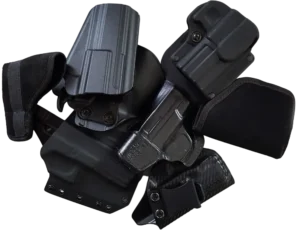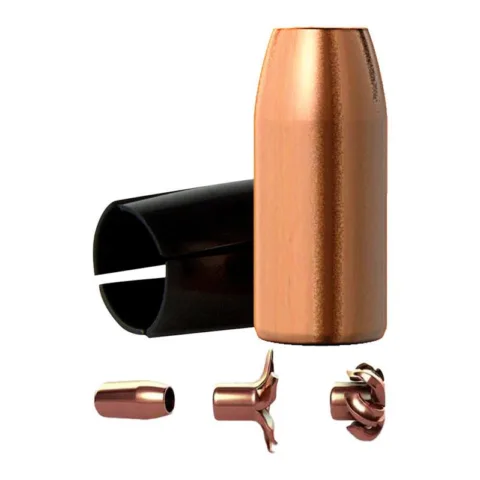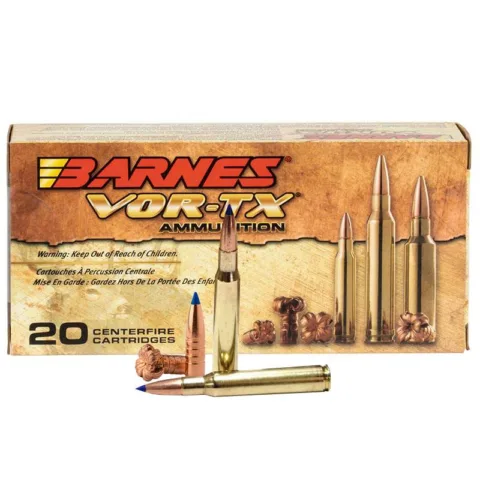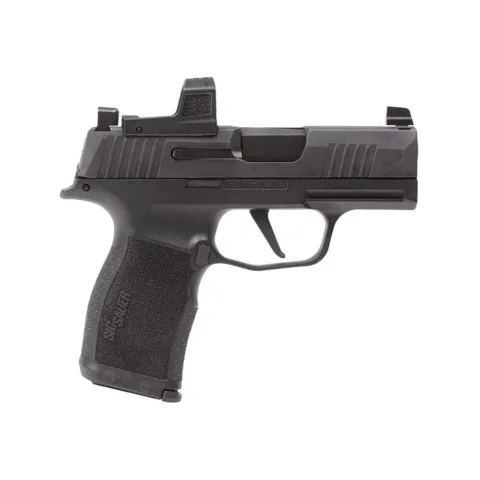Enhance Your Handgun Experience: Unmissable Accessories for Every Owner
Whether serving as a steadfast tool for self-defense, a trusted companion in target shooting, or as a wise investment over the long haul, handguns are as versatile as they are essential for many. The enduring intrinsic value of firearms ensures that those well maintained can fetch a significant portion of their initial cost when resold. Yet, with the privilege of ownership comes the weight of responsibility — one that includes the priority to practice safe and effective gun handling. Elevating your handgun with standout accessories not only boosts functionality and performance but also infuses personal meaning into your cherished firearm.
| Category | Key Points |
|---|---|
| Identifying Accessories | Consider purpose, compatibility, budget, quality, and versatility when choosing handgun accessories. |
| Holsters | Selection based on comfort, draw speed, and concealment. IWB and OWB are common types, made of materials like leather, kydex, and nylon. |
| Sights | Iron, electronic, scopes, and thermal sight options available, each suited for different shooting conditions and purposes. |
| Magazines | Different types include standard, extended, and drum magazines, affecting capacity and handling. |
| Suppressors | Used to reduce noise and recoil. Rimfire, pistol, and rifle suppressors each serve specific functions. |
| Rail Systems | Picatinny and Weaver rails are common platforms for mounting accessories, enhancing the handgun’s versatility. |
| Training | Essential for effective use of accessories, with specific practice techniques and educational resources recommended. |
| Maintenance | Regular cleaning, proper storage, and condition checks are necessary to maintain accessory functionality and appearance. |
| Legal Considerations | Understanding and complying with laws regulating handgun accessories is crucial for responsible ownership. |
Identifying Essential Handgun Accessories
When venturing into the world of firearm enhancements, the breadth of available handgun accessories can seem daunting. To discern the genuine essentials from the optional luxuries, consider the following factors:
- Purpose: Your accessory choices should dovetail with your shooting objectives, whether that’s for tactical applications, competitive edge, or leisurely practice.
- Compatibility: Confirm that the accessories you’re considering match your specific handgun model, sparing you from frustrating and expensive errors.
- Budget: Clearly determine what you’re willing to invest in accessories, focusing on necessities within your means.
- Quality: Select durable, reliable accessories from esteemed manufacturers; the longevity of your investment often correlates with the quality of your purchase.
- Versatility: Opt for versatile accessories that can adapt to various shooting environments or purposes, extending the utility of your handgun.
Holsters: Combining Comfort with Readiness
The right holster is not only a key piece of a handgun owner’s equipment for carrying their firearm; it is also a crucial factor in ensuring they can respond quickly and effectively when the need arises. Considerations for selecting a holster extend beyond mere fit and comfort to include the speed of draw, concealment level, and equipment protection.
Types of Holsters
When it comes to handgun holsters, there’s a myriad of options each designed for specific situations and preferences:
- Inside the Waistband (IWB): Tucked away discreetly, IWB holsters attach inside your trousers for maximum concealment.
- Outside the Waistband (OWB): Common for their comfort and ease of access, OWB holsters sit on the outside of your pants.
- Shoulder Holsters: Ideal for those who sit frequently or need alternative carry positions, shoulder holsters offer a unique carrying style that can be easily concealed under a jacket.
- Ankle Holsters: For discreet carry and backup options, ankle holsters offer a concealed approach, albeit with slower draw times.
Choosing between these varieties involves a balance of personal comfort, the anticipated level of activity, the environment in which you’ll be carrying, and the degree of concealment required.
Materials for Longevity and Fit
Another major consideration is the material from which the holster is fashioned. Here’s a closer look:
- Leather: A traditional favorite, leather holsters are prized for their durability and the way they conform to the handgun over time, offering a custom-like fit. However, they do require more maintenance and can vary in quality.
- Kydex: As a lightweight and low-maintenance alternative to leather, kydex holsters provide a rigid, form-fitted solution that ensures consistent retention and an easy re-holstering experience.
- Nylon: For those seeking an affordable and versatile option, nylon holsters are a lightweight choice. They are often adjustable for different handgun models but may not offer the same level of protection or retention as leather or kydex.
Each material comes with its own set of maintenance considerations. Leather may need regular conditioning, kydex can usually be wiped clean, and nylon may require occasional machine washing to remove dirt and lint.
Sights: Hit Your Mark Every Time
Precise aiming is tantamount to successful handgun use, and selecting the optimal sights is a critical step. Traditional iron sights offer tried-and-true reliability, while modern optics bring technology to the forefront, simplifying target alignment and enhancing long-range accuracy. This section delves into when each type of sight may be preferred – optics for scenarios demanding rapid target acquisition and iron sights for situations where simplicity and weather resistance are key. Readers will also benefit from maintenance tips to ensure their sights remain clear and effective.
When it comes to perfecting your shot, the right sights can make all the difference. Here’s a breakdown to help you choose the best fit for your handgun:
- Iron Sights: The classic choice, iron sights rely on a simple notch (rear sight) and post (front sight) alignment. Ideal for close-range accuracy and quick target acquisition without the complexity of technology. They’re known for their durability and reliability.
- Standard: Basic post and notch design.
- Night Sights: Glow-in-the-dark features for low-light conditions.
- Fiber Optic: Better visibility in varied lighting with colored optics.
- Electronic Sights: Offering rapid targeting without manual alignment, these sights are an asset for both competitive shooting and tactical applications. Their illuminated reticle makes aiming intuitive and faster than traditional iron sights.
- Red Dot: Projects a simple red dot as an aiming point.
- Reflex: Uses a reflective glass element to display the reticle.
- Holographic: Creates a projected holographic image for aiming.
- Scopes: Primarily used for long-range shooting, scopes provide magnification, offering precision over greater distances. Common in hunting pistols, they are quintessential when a clear, distant view of your target is needed.
- Fixed Power: Offers a set level of magnification.
- Variable Power: Allows you to adjust the magnification for different ranges.
- Thermal Sights: Cutting-edge technology for detecting heat signatures, thermal sights are invaluable for nighttime hunting or tactical scenarios where visibility is compromised.
They detect heat, so they are unaffected by smoke or foliage. Excellent for both spotting and targeting in complete darkness.
Magazines: Sustaining Firepower
Magazines are fundamental to the functionality of your handgun, and choosing the right one impacts your shooting experience. Here’s a closer look at the types and uses of magazines:
- Standard Magazines: The typical magazine that comes with your firearm, designed to hold a firearm-specific number of rounds. Preferred for daily carry due to their balance and tested reliability.
- Extended Magazines: Offering additional capacity, extended magazines reduce the need for frequent reloading, which can be a strategic advantage in both competitive shooting and tactical situations.
- Drum Magazines: These high-capacity magazines provide a significant number of rounds, making them very effective in competitions or defense scenarios where sustained firepower is key.
- Smaller-sized magazines ensure better concealability and lighter weight.
- Larger magazines enhance grip surface, which can aid handling for some shooters.
Sizes and Impact on Handling:
Suppressors: Minimizing Noise, Enhancing Focus
Noise Reduction: Understanding Suppressors
Suppressors function by mitigating the auditory impact of discharging firearms. Not quite the ‘silencers’ of popular fiction, suppressors are in fact crucial tools for preserving hearing in hunting environments and adding a stealth element in strategic scenarios. This section mandates a thorough understanding of legal considerations, detailing the variance in state laws and underscoring the importance of informed, lawful usage.
Suppressors, often colloquially called silencers, are valuable for various shooting activities. Not only do they reduce noise pollution, but they also diminish recoil and muzzle blast, allowing for more focused shooting. Different suppressor types serve distinct purposes:
- Rimfire Suppressors: Generally lighter and more compact, ideal for smaller calibers. They’re great for varmint hunting, as they minimize the disturbance to other nearby game.
- Centerfire Pistol Suppressors: Made for larger pistol calibers, these suppressors offer a balance between size and noise reduction, suitable for both home defense and range practice.
- Centerfire Rifle Suppressors: Built to withstand the pressure and volume of rifle rounds, these suppressors are key for long-range shooters and hunters who require both stealth and shot stability.
Customization with Rail Systems
We delve into rail systems such as Picatinny and Weaver, showcasing their role in enhancing handgun functionality. Readers will gain insights into the importance of compatible installation, the broad scope of accessory options enabled by rails, and the best practices that ensure stability and precision post-attachment.
Rails: The Platform for Upgrading Your Handgun
Rail systems are critical for attaching additional accessories to your handgun, turning a standard firearm into a personalized tool. Here’s how to optimize your rail choices for maximum adaptability:
Picatinny Rails
The military standard with wider slots and consistent spacing. Perfect for a wide array of accessories, offering a secure and versatile platform.
Weaver Rails
Similar to Picatinny but with fewer slots. Ideal for shooters who prefer a sleek setup or use fewer attachments.
- Picatinny rails offer more attachment points for greater flexibility.
- Weaver rails provide a lower profile for a cleaner look and lighter setup.
Accessorize with Purpose: Training for Efficiency
Just as critical as the accessories themselves is the expertise in their usage. Training is essential to unlock their full potential, a theme this section explores by highlighting effective practice techniques and educational resources. Whether it’s drawing from a new holster, engaging with advanced sights, or familiarizing oneself with the new balance of an extended magazine-equipped gun, proficiency is the goal.
Maintenance: Extending the Life of Your Accessories
Accessorizing your handgun entails a commitment beyond the initial purchase — it’s about ensuring each addition remains in top condition over time. Here are a few key maintenance strategies to consider:
- Regular Cleaning: Just like the firearm itself, accessories require cleanliness to function properly. A well-kept holster can prevent dirt buildup that could scratch your handgun, while a clean sight is crucial for clear visibility.
- Proper Storage: When not in use, accessories should be stored in a cool, dry place to avoid damage from moisture or extreme temperatures, which can degrade materials and performance.
- Regular Checks: Periodically inspect your accessories for wear and tear, especially gear like holsters and rail systems, which may loosen over time due to repeated use.
Legal Considerations: Staying Informed and Compliant
When accessorizing your handgun, it’s not enough to simply focus on the aesthetics and functionality; one must also tread carefully through the legal complexities that can accompany each addition. This section is devoted to outlining the legal implications surrounding various handgun accessories, such as suppressors and high-capacity magazines. Being versed in not only federal but also state-specific laws is not just wise — it’s crucial for responsible gun ownership.
Conclusion: Your Handgun, Your Identity
Customizing your handgun goes beyond enhancing its capabilities — it’s about creating a firearm that resonates with your distinctive tastes and requirements. At ICB Firearms, we offer a curated selection of quality accessories, crafted to refine your handgun into an integral part of your lifestyle. Embrace our comprehensive guide and revel in responsible, rewarding gun ownership that feels authentically yours.
Frequently Asked Questions (FAQs)
What should I consider when choosing handgun accessories?
Consider the purpose, compatibility with your firearm, budget, manufacturer quality, and accessory versatility for different scenarios.
What are the differences between IWB and OWB holsters?
IWB holsters are designed for concealment inside the pants, while OWB holsters are worn outside for quicker access.
How do I maintain my holster and ensure its longevity?
Leather holsters require conditioning, kydex can be wiped clean, and nylon may need occasional washing.
Are there legal restrictions for using extended magazines or suppressors?
Yes, legal restrictions on extended magazines and suppressors vary by state and country.
Can I use any rail system on my handgun?
Rail compatibility depends on your handgun’s specifications; check for compatibility with Picatinny or Weaver systems, among others.
What kind of training should I pursue to become proficient with my handgun accessories?
Practical shooting courses tailored to your accessories, including holster drills and sight alignment practice, are recommended.
How often should I clean and inspect my handgun accessories?
Cleaning and inspections are recommended after each use or at least once a month if not used regularly.
Viridian 9300038 CTL Custom for Springfield Hellcat Pro with SAFECharge
Viridian 9300038 CTL Custom for Springfield Hellcat Pro with SAFECharge C Series Black 120/210/525 Lumens White…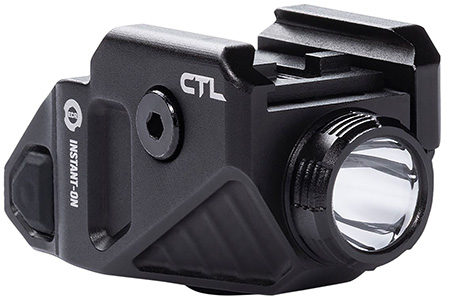
Leupold 184362 Performance Wear Desoto Shatter Proof Polarized Blue Mirror
Leupold 184362 Performance Wear Desoto Shatter Proof Polarized Blue Mirror Lens, Dark Gray Frame, No-Slip Bridge,…

